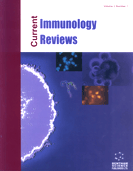Abstract
Stevens-Johnson syndrome (SJS), toxic epidermal necrolysis (TEN), and drug induced eosinophilia and systemic syndrome, also known as drug-induced hypersensitivity syndrome (DRESS/DIHS) are rare but life-threatening severe cutaneous adverse reactions (SCARs), which are majorly caused by a myriad of drugs. Although the pathological mechanisms underlying such reactions are not entirely understood, recent studies suggested that many cases of SCARs are specific immune reactions where interactions between human leukocyte antigen (HLA) molecules and certain drugs play a key role in the activation of immune cells (predominantly T lymphocytes) in defined populations. Upon the activation, multiple immunological and cytotoxic signals are triggered to mediate the damages in skin lesions and the subsequent exacerbation of the disease. These danger signals, including inflammatory cytokines, chemokines/chemokine receptors, and cytotoxic proteins, will be summarized and their pathogenic role in SCARs will be discussed in this review. The knowledge gained from these researches will be beneficial for prompt diagnosis and better treatment for this condition.
Keywords: Chemokine, cytokine, drug induced eosinophilia and systemic syndrome, drug induced hypersensitivity syndrome, Stevens-Johnson syndrome, toxic epidermal necrosis.
 25
25


